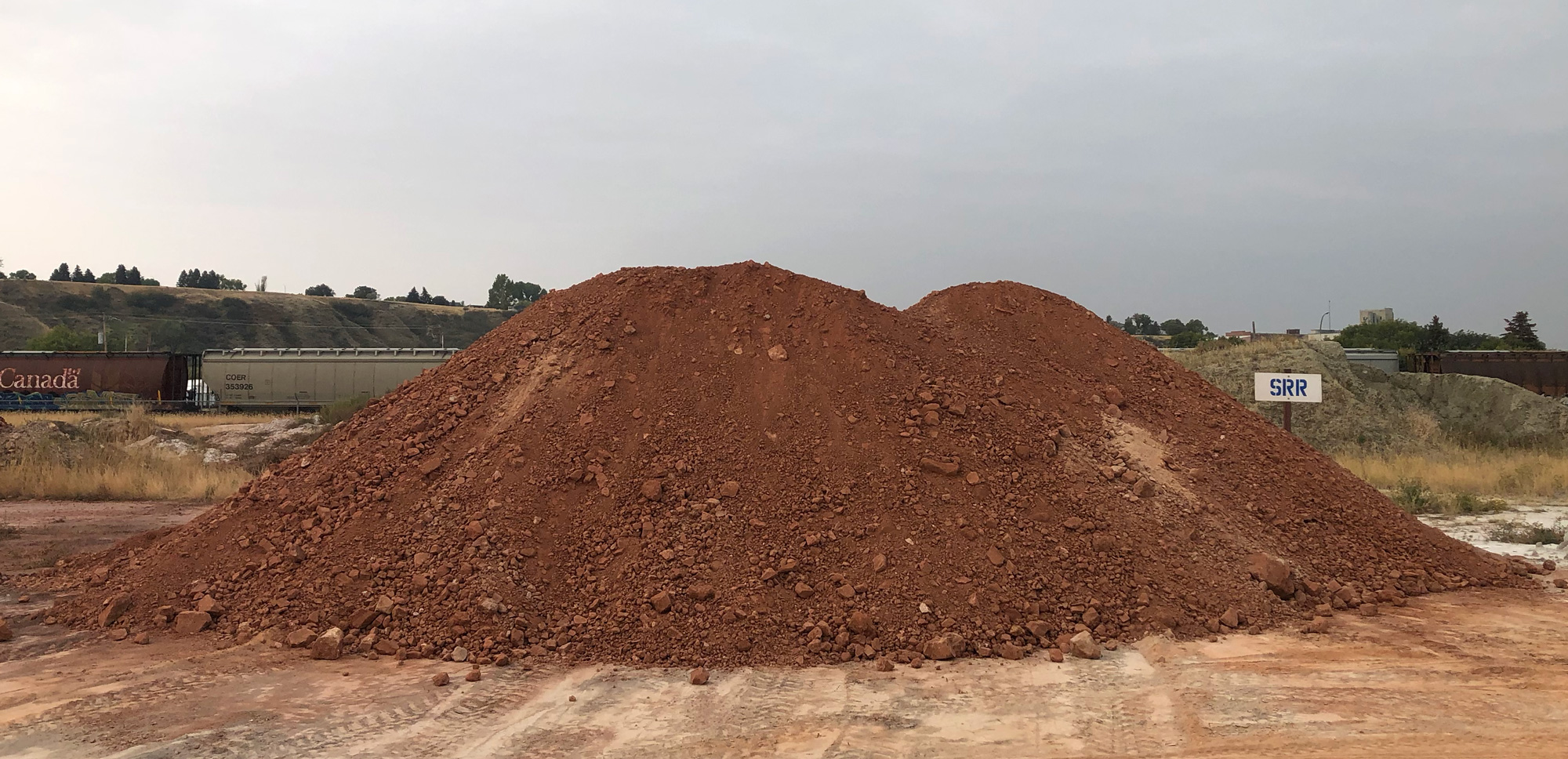| Monthly Tech-Tip | No tracking! No ads! | |
Saint Rose Red
Description: High Temperature Red Stoneware, St. Rose, St Rose
| Oxide | Analysis | Formula | Tolerance |
|---|---|---|---|
| CaO | 0.61% | 0.07 | |
| K2O | 0.14% | 0.01 | |
| MgO | 0.16% | 0.03 | |
| Na2O | 0.10% | 0.01 | |
| TiO2 | 1.09% | 0.09 | |
| Al2O3 | 15.94% | 1.00 | |
| P2O5 | 0.04% | - | |
| SiO2 | 66.45% | 7.08 | |
| Fe2O3 | 8.44% | 0.34 | |
| MnO | 0.09% | 0.01 | |
| LOI | 7.00% | n/a | |
| Oxide Weight | 595.49 | ||
| Formula Weight | 640.31 | ||
Notes
St. Rose Red is a unique low plasticity highly iron-stained refractory clay that is useful for imparting red coloration to high-temperature reduction fired clay bodies. While many iron-bearing plastic clays are on the market, almost all of these are low-temperature materials and thus flux to produce brown rather than red colors and higher temperatures. St. Rose Red also contains particulate iron materials which melt and blossom in glazes to produce speckles.
Related Information
The stockpile of St. Rose Red fireclay at the Plainsman plant

This picture has its own page with more detail, click here to see it.
This is the lump form of Plainsman St. Rose Red clay, as received from the quarry. The bright red color is natural iron oxide. That iron cannot be washed out, it is part of the clay crystal structure. The pigmentation is heavy enough that even when this material is a minor part of a body recipe, that body will still fire to a dark color. The color and high cost of St. Rose Red means that it is always heavily diluted with other clays, many of which are highly plastic. Because St. Rose is non-plastic it is a perfect complement to these. It is also refractory, it melts at a much higher temperature than typical clays. It is mined near St. Rose, Manitoba.
Plainsman Red Fireclay (Fire-Red)

This picture has its own page with more detail, click here to see it.
Top to bottom: Cone 10 reduction, cone 10, 9, 8, 7 oxidation. Fire-Red is a mix of St. Rose Red fireclay, M2 Montana medium fire red clay with some dark burning A1 ball clay. This blend is less refractory than pure St. Rose Red and much more plastic, thus more suitable as a body addition. The color shift between cone 9 and 10 oxidation occurs because of the fluxing action of M2.
Saint Rose Red being delivered. Look what it does at cone 10R!

This picture has its own page with more detail, click here to see it.
We get this clay from St. Rose, Manitoba. Four tandem loads arrived this week. Just seeing the pile inspires me to make more pieces! It is a red fireclay and it is highly unusual. St. Rose Red has issues. They at first seem to be problems, but in combination they give it magic powers! It fires with very heavy iron speckling. The iron pigmentation is so high that it burns almost black at cone 10R. It has low plasticity. It shivers glazes: The vase on this picture lasted an hour after kiln exit, it spontaneously fractured because of the outward pressure from the under-compression glaze on the inside. But, by combining St. Rose Red with our more vitreous clays, which are highly plastic, we can make H440 and H443. A mix of only 45 St. Rose with 40 Ball clay and 15 feldspar produces a rustic metallic surface (like the cup shown). Such a body cannot be made from a low fire red clay (like RedArt), it would just warp and collapse in the kiln. It is the refractory character, heavy pigmentation, iron speckling and low plasticity of St. Rose that make metallic ware possible.
Links
| Materials |
M2 Red Stoneware
|
| Materials |
A1 Ball Clay
It is very high in iron stone (pyrite) concretions and soluble iron salts, a heavily stained bentonitic ball clay. |
| Materials |
Plainsman Red Fireclay
|
| Materials |
Fire-Red
|
| Materials |
Newman Red Clay
|
| Typecodes |
Clay Other
Clays that are not kaolins, ball clays or bentonites. For example, stoneware clays are mixtures of all of the above plus quartz, feldspar, mica and other minerals. There are also many clays that have high plasticity like bentonite but are much different mineralogically. |
| By Tony Hansen Follow me on        |  |
Got a Question?
Buy me a coffee and we can talk

https://digitalfire.com, All Rights Reserved
Privacy Policy
